slides: Nine Invasive Species Horror Stories At The Oregon Zoo





 Email to a friend
Permalink
Email to a friend
Permalink
Saturday, February 28, 2015
Kemea Smith, GoLocalPDX Contributor
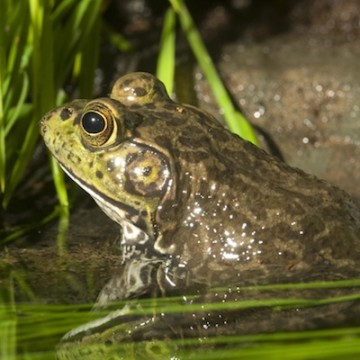
American Bullfrog
In honor of
National Invasive Species Awareness Week GoLocalPDX spoke to the Oregon Zoo to find out more about invasive species problems.
Invasive species are plants and animals that play a critical part in their native ecosystems, but cause destruction when humans transport them to foreign lands.
See Slides Below: Nine Invasive Species Horror Stories At The Oregon Zoo
“Invasive species are often characterized almost in science fiction terms,” said Nadja Wielebnowski, Oregon Zoo conservation and research manager. “They’re portrayed as alien invaders that infest and destroy an unsuspecting ecosystem. What’s important to realize though is that these species are invasive because of human actions. And we’re the ones who can help do something about it.”
Take a look at nine Oregon Zoo animals that are wreaking havoc on natural wildlife (and how you can help) below.
The zoo opens at 10 a.m. daily and is located five minutes from downtown Portland, just off Highway 26. General zoo admission is $11.50 (ages 12-64), $10 for seniors (65 and up), $8.50 for children (ages 3-11) and free for those 2 and younger. Additional information is available at www.oregonzoo.org or by calling 503-226-1561.
Related Slideshow: Nine Invasive Species Horror Stories At The Oregon Zoo
In honor of National Invasive Species Awareness Week the Oregon Zoo speaks to GoLocalPDX, to find out more about invasive species problems.
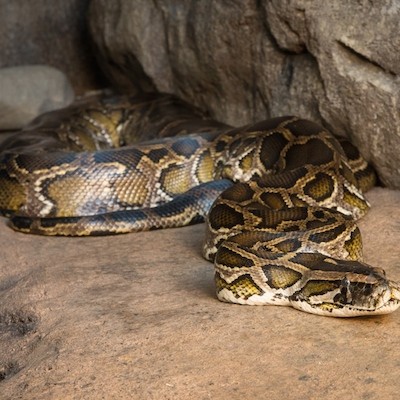
Prev
Next
Burmese Python
The over 20 feet pythons are Southeast Asia natives who established themselves in the Florida Everglades as escaped or released pets. These hypercarnivorous are a threat to native wildlife, because they eat anything they encounter- even alligators! Visit the hard-to-care-for mega-reptiles exhibit at the Oregon Zoo, to get a good look at these pythons.
Photo Credit: Oregon Zoo (image cropped)
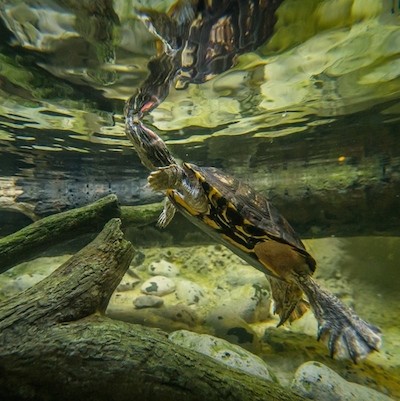
Prev
Next
Red-Eared Slider
Red-Eared Slider’s are indigenous to the south central United States. These turtles are usually set free once owners grow tired of caring for them. They end up competing with native turtles, spreading parasites and disease. Help scientists track alien invaders by reporting turtle sightings on oregonturtles.com.
Photo Credit: Oregon Zoo (image cropped)
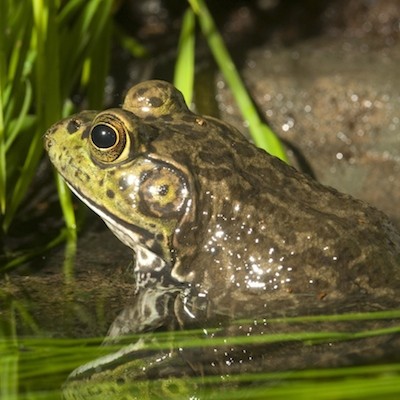
Prev
Next
American Bullfrog
Bullfrogs are native to the easter United States and threaten local wildlife when they escape from frog leg farms. In the Northwest region bullfrogs target western pond turtles and Oregon spotted frogs. The Oregon Zoo is currently working to improve the health of spotted frogs and pond turtles.
Find out how to support the zoo’s efforts through Wildlife Partners.
Photo Credit: Oregon Zoo (image cropped)
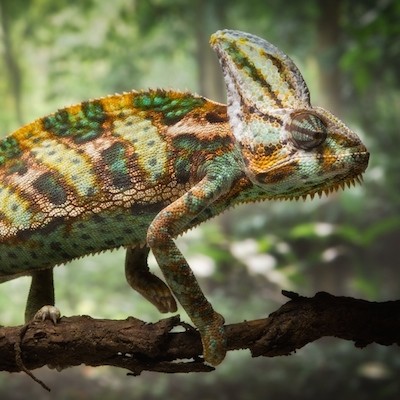
Prev
Next
Veiled Chameleon
These Arabian reptiles are hiding specialist, popular as pets, fast reproducers, and ravenous hunters. These chameleons have become a problem for native wildlife in Hawaii, as state law bans importing and transporting a variety of exotic reptiles. Basically it is better for the animal and environment, to avoid releasing any pet into the wild.
Photo Credit: Oregon Zoo (image cropped)
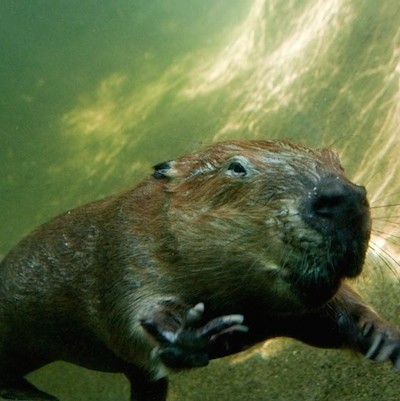
Prev
Next
Nutria (and Beaver)
The South American transplants have caused damage throughout the United States by eroding stream banks. You can see these large rodents in local natural areas like Smith and Bybee Wetlands.
The beaver is a invasive species in Patagonia where trees can’t continue to live once bitten or flooded. You can help protect wetland habitats by becoming a natural area site steward.
Photo Credit: Oregon Zoo (image cropped)
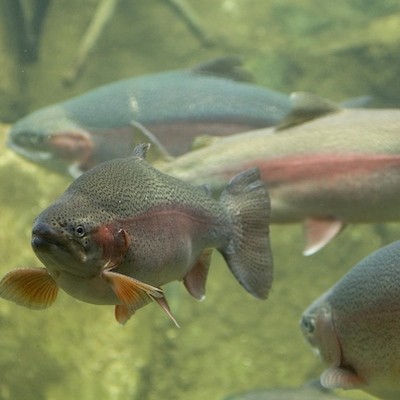
Prev
Next
Rainbow Trout
The Rainbow Trout is one of the most popular hatchery fish in the United States and internationally, because it adapts to hatchery environments. Native to the Pacific states of the United States, the trout is immune to diseases and produces thousands of eggs at a young age.
Photo Credit: Oregon Zoo (image cropped)
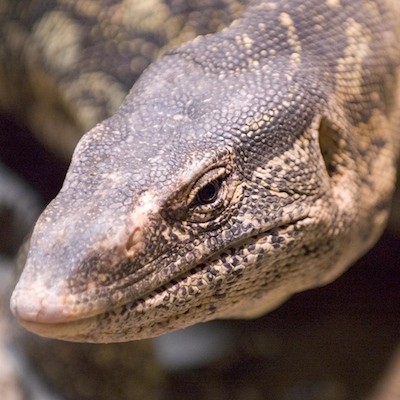
Prev
Next
Nile Monitor
These creepy dragon looking lizards are native to Africa but have been seen in Florida’s West Palm Beach. They are good swimmers and can grow up to seven feet in length. They are often not recommend as pets because they are high maintenance. You can see these fascinating lizards at the Oregon Zoo.
Photo Credit: Oregon Zoo (image cropped)
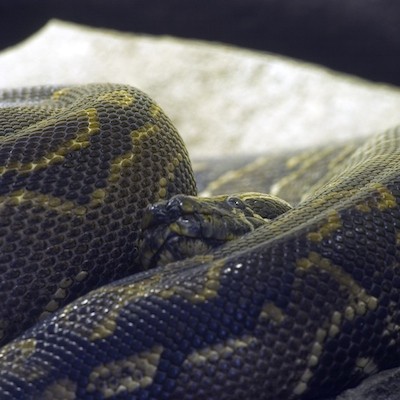
Prev
Next
African Rock Python
The African Rock Python is Africa’s largest snake at 20-foot-long. The dangerous pythons have attacked and killed people in the past. The pythons constrict their prey because they lack venom. They python has also been colonizing in the United States in suburban Miami.
Photo Credit: Oregon Zoo (image cropped)
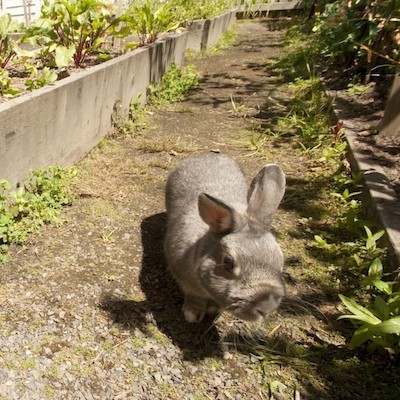
Prev
Next
Rabbit
The long floppy eared animal is a invasive species to Australia, as they are fruitful breeders. They also greedy eaters eating roots, tree bark, and leaves which are low in nutritional value. This is why they often reingest their feces to get extra nutritional value.
Photo Credit: Oregon Zoo (image cropped)
Related Articles
Enjoy this post? Share it with others.





 Email to a friend
Permalink
Email to a friend
Permalink























Follow us on Pinterest Google + Facebook Twitter See It Read It